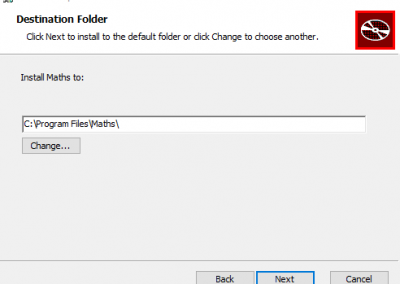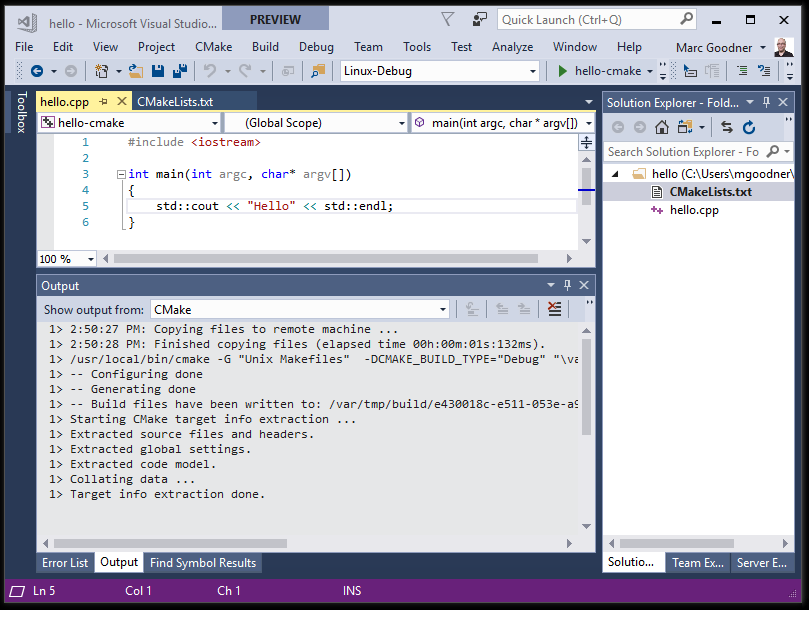

- CMAKE INSTALL DESTINATION LINUX HOW TO
- CMAKE INSTALL DESTINATION LINUX MANUAL
- CMAKE INSTALL DESTINATION LINUX SOFTWARE
- CMAKE INSTALL DESTINATION LINUX DOWNLOAD
There's usually some additional data, such as manual or info pages, example projects, or configuration files.
CMAKE INSTALL DESTINATION LINUX SOFTWARE
The install command accepts a few parameters, but in this case, all that's necessary is the TARGETS parameter followed by the name of the file to install: install(TARGETS Hello) Adding files to a CMake projectĪ software project rarely just delivers code to its users. In this simple example, only one thing is marked for installation, so you only have to add one install line to your CMakeLists. You can add libraries with the add_library command.Īfter you've set what files you want built and marked for installation, you must tell CMake where the finished product should end up once a user installs your application. In a complex project, you likely have libraries as well as executables.

This sets the name of your compiled binary to Hello, so functionally, it's the same as running gcc with -o Hello in your terminal. This is a simple example, though, so the next command you need is essential-you must define for CMake what code you're building: add_executable(Hello hello.c) The CMake website documents all valid built-in commands and their available parameters, so it's easy to uncover the functions you need, no matter what you're trying to do. It can handle arbitrary files and has lots of commands available to it, so it can help you maintain projects in many different forms. Make no mistake, though, CMake is useful beyond just C and C++. CMake strives to retain compatibility for as long as possible, but the more you use it and follow its development, the better you'll know what features you rely upon. First, declare the minimum required version of CMake and a project title and version. To start using CMake with your project, you need only to create a CMakeLists.txt file in your project directory. In many cases, incorporating a CMake project into a pipeline can be automated. Packaging tools know CMake, so it's likely there will not be any patching, hacking, or adjustments required. Hand a project with CMake over to a distro packager, whether they're packaging an RPM or a DEB or a TGZ (or anything else), and their job is simple and direct. No more custom install scripts that break on any untested operating system. With CMake, all you have to know is which files need to be installed to what general location. And because of tools like CMake, it's trivial for power users to customize and override any non-optimal value according to their system's needs. While it can't make your project work across all POSIX platforms (that's up to you, as the coder), it can ensure that the files you've marked for installation get installed to the most sensible locations on a known platform. CMake portabilityĬMake is designed with portability in mind. It seems simple, and it is when you use CMake.
CMAKE INSTALL DESTINATION LINUX DOWNLOAD
On Windows, you can use Chocolatey or download a binary directly from the CMake website.

On Debian or similar: $ sudo apt install cmakeįor Mac, you can use MacPorts or Homebrew: $ sudo port install cmake If not, you can install it with your distribution's package manager: $ sudo dnf install cmake Install CMakeĬMake may already be installed on your Linux system. It uses simple and clearly documented syntax, so it's easy to start using even if you've never used a build system before. Its syntax and structure can be confusing, but luckily there are alternatives, including the open source CMake framework.ĬMake is a cross-platform suite for building, testing, and packaging software. It's a robust and common platform that integrates easily into many packaging systems, including RPM, APT, pkgsrc, and more.
CMAKE INSTALL DESTINATION LINUX HOW TO
In my introduction to Autotools, I demonstrated how to manage building and packaging code with GNU Autotools. Running Kubernetes on your Raspberry Pi.

A practical guide to home automation using open source tools.6 open source tools for staying organized.An introduction to programming with Bash.A guide to building a video game with Python.


 0 kommentar(er)
0 kommentar(er)
